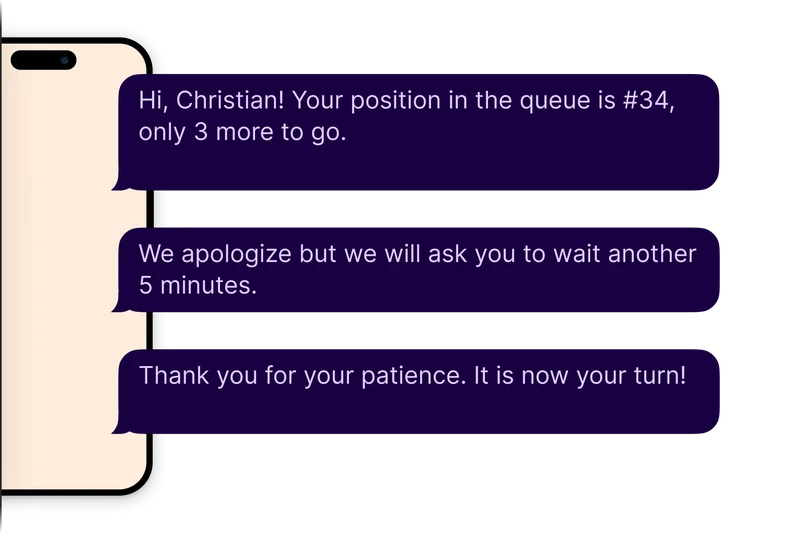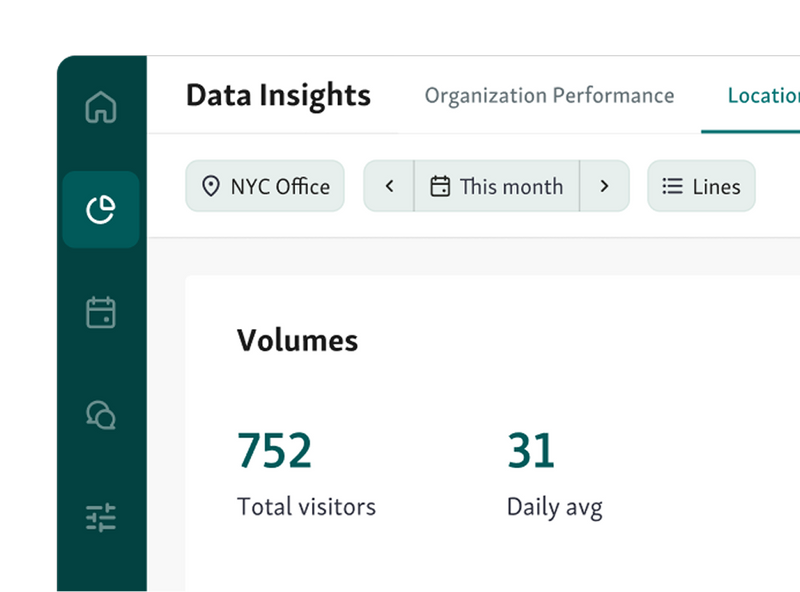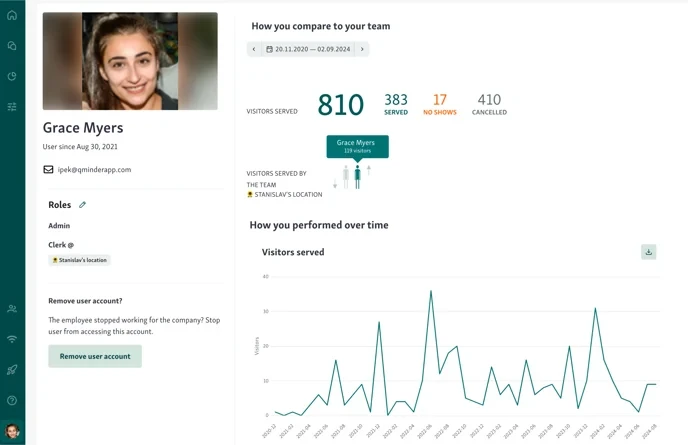Patient flow management makes or breaks a hospital's ability to deliver care and stay financially healthy. Mess up the lines and delays, and you get LWBS incidents, Left Without Being Seen, where patients bail before treatment.
Bad for satisfaction scores, worse for the bottom line. Hospital patient flow management attacks this problem by fixing processes, putting staff where they're needed, and clearing bottlenecks before LWBS medical cases pile up.
Every step from registration to discharge matters. Managing patient flow in hospitals gets patients seen faster, uses resources smarter, and keeps both care quality and finances stable.
In this blog, we’ll explore strategies and solutions to cut LWBS and safeguard revenue.
What Is LWBS (Left Without Being Seen)?
LWBS (Left Without Being Seen) happens when patients walk out of a hospital or clinic before getting medical care. Long wait times drive them away. So do inefficient processes and poor patient flow management.
High LWBS medical rates create problems everywhere. Patient safety suffers, satisfaction tanks, and hospitals lose serious revenue. Hospital patient flow management that actually works cuts LWBS rates down.
The Hidden Cost of LWBS in Healthcare
LWBS (Left Without Being Seen) not only impacts patient safety but also causes revenue loss. Understanding its hidden costs helps hospitals improve flow and efficiency. Let’s take a look:
1. Patient Safety Risks
Patients leaving without being seen puts them in danger. Medical conditions don't wait, they worsen. A treatable issue becomes an emergency, or worse, leads to complications that proper assessment would have caught. Getting patient flow right means fewer people leave, and fewer people end up in situations that could have been avoided with timely care.
2. Revenue Loss
LWBS cases hurt the hospital's finances. These are patients who came in but never received services, which means no revenue. Each one adds up. Hospitals that fix their flow issues see more patients through to treatment, which recovers lost income and keeps operations sustainable.
3. Operational Strain
When LWBS numbers are high, it shows the system isn't working. Waiting rooms overflow, staff are overwhelmed, and bottlenecks create chaos. Improving flow doesn't just help patients, it gives staff room to do their jobs properly and lets hospitals manage capacity without constant crisis mode.
How Patient Flow Solutions Help Reduce LWBS
Patient flow solutions are essential tools for hospitals looking to minimize LWBS (Left Without Being Seen) incidents. Here’s how patient flow solutions help:
1. Real-Time Queue Management for Faster Care
Patient flow solutions like real-time queue systems give hospitals the tools to streamline hospital patient flow management and slash LWBS rates. These systems organize patient movement and prioritize care so patients get seen quickly and efficiently.

Efficient triage: Patients get assigned by urgency level, critical cases jump ahead in line
Instant updates: Staff watches queue changes live and shifts workflow on the fly
Digital notifications: Patients get alerts when their turn arrives, cutting missed visits
Prioritize high-risk patients: Vulnerable patients move to the front without wrecking the overall flow
2. Digital Check-Ins to Cut Wait Times
Patient flow solutions bring mobile or kiosk-based check-ins that simplify hospital patient flow management and cut LWBS (Left Without Being Seen) incidents. Patients register fast and update their status digitally. The process speeds up and frustration drops during peak times.

Faster registration: Patients skip the front desk line entirely with remote sign-in
Accurate data collection: Fewer errors mess up patient records
Improved patient experience: Perceived wait times shrink and anxiety drops
Seamless integration: Connects with real-time queue management to update patient positions automatically
3. Smart Notifications and Status Updates
Automated SMS alerts and status updates drive down LWBS (Left Without Being Seen) rates as part of patient flow solutions. Patients stay informed about their spot in line, expected wait times, and delays. Frustration drops and patients stick around until they get seen.

Real-time notifications: Patients know when their turn arrives or when delays hit
SMS and app alerts: Messages reach patients anywhere, cutting unnecessary waiting room time
Enhanced communication: Patients stay in the loop, uncertainty disappears, fewer people bail
Customizable messages: Updates match patient priority, department, or service needs
4. Data-Driven Insights to Predict Bottlenecks
Patient flow solutions provide analytics that help hospitals improve hospital patient flow management and reduce LWBS (Left Without Being Seen). By analyzing patient trends and identifying peak hours, hospitals can optimize staffing, resource allocation, and workflow to prevent delays before they happen.

Identify peak times: Detect when patient arrivals are highest to plan staffing accordingly.
Predict bottlenecks: Highlight areas where delays frequently occur in the patient journey.
Optimize staff schedules: Allocate personnel where and when they’re most needed.
Improve resource utilization: Ensure rooms, equipment, and staff are used efficiently to maintain smooth flow.
5. Staff Coordination and Role Optimization
Patient flow solutions boost hospital patient flow management by getting staff coordination right. Put the right team members in the right spots at the right times. Bottlenecks disappear and patients move through the hospital without getting stuck.

Dynamic role assignment: Move staff around based on which departments need help right now
Cross-functional support: Staff jumps between areas when things get busy
Reduce idle time: Keep staff working with patients instead of waiting for something to do
Clear responsibilities: Everyone knows their job - no confusion, no duplicate work
Also read - Best Practices for Managing Customer Flow in High-Traffic Government and Public Service Environments
How Lower LWBS and Better Patient Flow Improves Hospital Revenue
Efficient patient check-in system helps hospitals reduce LWBS (Left Without Being Seen), keep more patients in the system, and protect revenue. Here’s how it makes a difference::
1. Higher Patient Retention and Throughput
Streamlined processes slash LWBS incidents. More patients get treated. Overall throughput climbs and revenue follows.
Fewer LWBS losses: Patients stay for care instead of walking out
Increased throughput: Same timeframe, more patients treated
Better resource use: Rooms, staff, and equipment work at capacity
Higher satisfaction: Happy patients come back for follow-ups
2. Reduced Staffing Pressure and Overtime Costs
Efficient patient flow management spreads workloads evenly across hospitals. Staff pressure drops and overtime costs shrink. Smooth patient movement prevents bottlenecks that create stress, mistakes, or expensive last-minute staffing scrambles.
Balanced workload: Staff stays busy steadily without sudden rushes
Lower overtime: No more unexpected shifts or forced extended hours
Reduced burnout: Employees focus on patient care instead of managing chaos
Improved efficiency: Better coordination creates smooth operations with fewer disruptions
3. Improved Patient Satisfaction Scores
Smart hospital patient flow management shrinks wait times and transforms patient experiences. Get patients seen quickly and watch satisfaction rates climb. Your HCAHPS scores go up and revenue follows over time.
Shorter wait times: Patients know they matter when they don't sit around forever
Higher satisfaction scores: Good experiences translate into strong HCAHPS and survey results
Increased loyalty: Satisfied patients book their follow-ups without hesitation
Positive word-of-mouth: Happy patients bring friends and family to your hospital
4. Data-Backed Financial Optimization
Tracking key metrics in hospital patient flow management lets hospitals measure performance, slash LWBS (Left Without Being Seen) rates, and make investment decisions based on real data. Watch wait times, throughput, and bottlenecks closely.
Measure efficiency: Monitor average wait times and how many patients move through
Identify bottlenecks: Find the exact spots causing delays and fix resource allocation
Justify investments: Numbers reveal where technology or staffing upgrades pay off
Maximize ROI: Fewer LWBS cases plus happier patients equals more revenue potential
Also read - How To Use Customer Behavior Data to Improve Service Efficiency in Government Agencies
Safeguard Revenue and Reduce LWBS with Patient Flow Solutions
Efficient patient flow management drives down LWBS (Left Without Being Seen) rates and protects hospital revenue. Streamlined processes, real-time queue management, digital check-ins, and data-driven insights get patients seen faster.
Staff workloads balance out. Operational efficiency hits new levels. Hospitals that nail managing patient flow in hospitals don't just boost patient satisfaction and safety, they protect their bottom line too.
Solutions like Qminder give hospitals the arsenal they need, track wait times, optimize patient movement, automate notifications. LWBS drops.
Get Qminder working in your hospital today, and deliver care experiences that actually impress.
The primary goal is to ensure patients move efficiently through the hospital, reducing wait times, preventing LWBS, and improving overall care quality.
Hospitals track metrics like average wait times, LWBS rates, patient throughput, and satisfaction scores to assess how effectively hospital patient flow management is working.
Yes. Even smaller facilities can use tools like queue management, digital check-ins, and notifications to streamline operations, reduce LWBS, and improve patient satisfaction.






